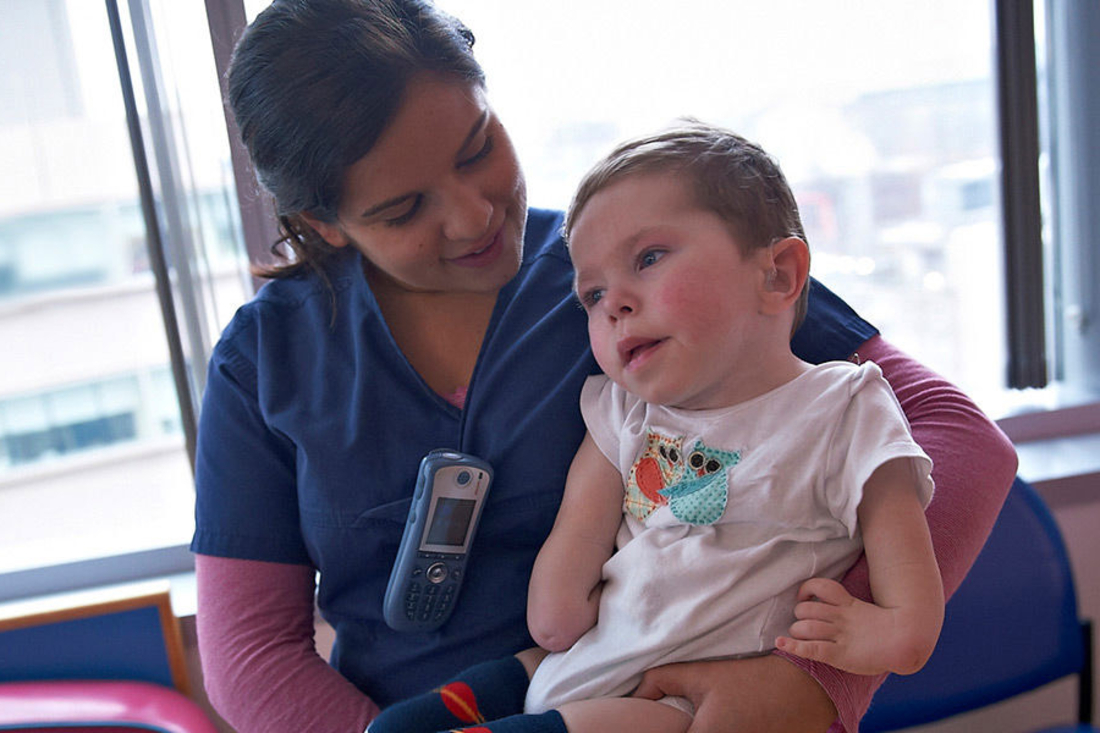Limb Preservation and Reconstruction Program

The care of children with limb differences, limb deformities and limb defects is complex. As a child grows, limb problems can worsen – accentuating the difference in length, or an abnormal bend or rotation in the arm or leg. Members of the Limb Preservation and Reconstruction Program at Children's Hospital of Philadelphia (CHOP) understand these complexities. Whether your child was born with a limb disorder or acquired it due to infection, disease or injury, we are here to provide expert assessment of any limb defect.
Our team believes strongly that there is a solution to improve functionality for every child with a limb difference. We are committed to working with families and referring physicians to offer patients the most advanced surgical and nonsurgical treatment options.
How we serve you
We work with families and pediatric orthopedic specialists from around the world to provide second opinions and consultations so you can make informed decisions about your child’s care. Treatment at CHOP may include limb straightening, lengthening or shortening; vascularized bone grafts for limb reconstruction; limb preservation and salvage; custom orthotics or prosthetics; education and rehabilitation.
Conditions we treat
In partnership with other sub-specialty clinics, we care for children with a wide variety of conditions that affect the arms and legs, including congenital limb defects, missing limbs, limb-length differences or limb deformities caused by trauma or tumors.
-
Achondroplasia - Amniotic band syndrome
- Angular limb deformities
- Blount’s disease (tibia vara)
-
Bone tumors (benign and cancerous) - Bowed legs (genu varum)
-
Brittle bone disease (osteogenesis imperfecta) -
Calcaneovalgus foot (excessive bend in foot/ankle) -
Cavus foot (very high arch) -
Congenital limb defects -
Congenital short femur (proximal femoral focal deficiency) -
Congenital vertical talus (rocker bottom foot) - Coxa vara
- Enchondromatosis
- Epiphyseal dysplasia
-
Ewing sarcoma -
Femoral anteversion/retroversion -
Fibrous dysplasia - Fibular hemimelia (short or missing fibula)
-
Flat feet - Foot deformities
-
Growth plate injuries or damage -
Hand deformities -
Hemihypertrophy (or hemihyperplasia) -
Hip deformities -
Kniest dysplasia - Knock knees (genu valgum)
-
Limb-length discrepancies - Madelung deformity
-
McCune Albright syndrome - Metabolic bone disease
- Multiple hereditary exostosis
-
Neurofibromatosis - Ollier disease
- Osteochondromatosis
-
Osteosarcoma - Posteromedial bowing of the tibia
-
Pseudoachondroplasia - Radial club hand
- Rickets
-
Skeletal dysplasias -
Tarsal coalition - Tibial hemimelia (longitudinal deficiency of the tibia)
-
Tibial torsion (internal and external) - Traumatic fractures
- Trevor’s disease (dysplasia epiphysealis hemimelica)
- Tumors or fractures of the limbs
- Ulnar club hand
-
Vascular anomalies of the limbs

Why choose us for limb preservation and reconstruction
Our team believes there is a solution to improve function for every child with a limb difference. We offer surgical and nonsurgical treatments to improve the limb’s strength, range of motion and function.

Meet your team
Our program includes expert orthopedic, microvascular, general and plastic surgeons working closely with physicians from rehabilitative medicine, genetics, radiology, radiology, oncology, hematology and pathology. Nurses, prosthetists, physical and occupational therapists, and others help support your child and family.

Our locations
Limb preservation and reconstruction specialists are available at multiple CHOP Care Network locations in Pennsylvania and New Jersey.
Our research
We are dedicated to using what we learn though research – both in the laboratory and at the bedside – to improve the care we provide to children and teens with limb differences, limb deformities and limb defects.

Limb Preservation and Reconstruction Program resources
We have created resources to help you find answers to your questions and feel confident with the care you are providing your child.
Your donation changes lives
A gift of any size helps us make life-saving breakthroughs for children everywhere.

